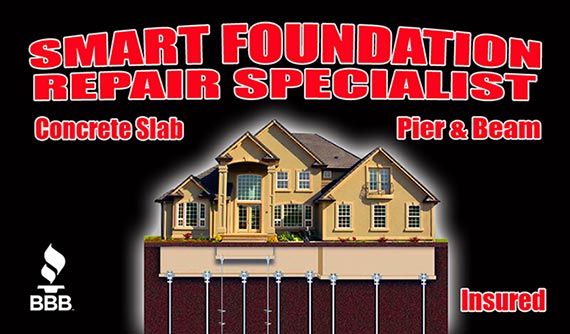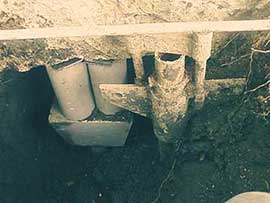* Single Pressed Piers * Double Pressed Piers * Single Drilled Pier * Double Drilled Pier * Read more ………
Single Pressed Piers
The single pressed pier system is used in residential single story buildings. This system uses the weight of the property to push the concrete cylinder to the point of rejection. The depth of the pier vary.
Pros: Installed correctly the pressed system works ideal in specific areas where bedrock is deeper than 8 feet.
Cons: Should the point of rejections be less than 8 feet, the probability of failure increases greatly.
Double Pressed Piers
The double pressed pier system is used for both two story residential and commercial properties. The installation is similar to the single pressed pier, except two piers are driven to the point of rejection.
Pros: Two piers driven to the point of rejection provides a much more stable condition and lowers the possibility of failure greatly.
Cons: Installed correctly and with proper maintenance this system’s possibility of failure is close to none.
Single Drilled Pier
The SDPS is used more commonly in areas where’s bedrock is 8 feet or less. A shaft is drilled up to 12 feet in length, 8-10 inches in diameter in the affected area. Rebar and 5500 psi concrete is used to build the pier after it is installed. A minimum of 5-7 days for the concrete to secure.
Pros: In adequate area where bedrock is 8 feet or less this system works outstanding.
Cons: This system has a maximum depth of 12 feet should the ground be unstable at that depth the possibility of failure is greatly.
Double Drilled Pier
The DDPS is used for two story residential and commercial properties. Two drilled shafts are installed in a reversed V formation creating greater upward push.
Pros: This system is perfect for all areas as the reversed V formation creates maximum upward support.
Cons: The pricing is higher than the other system with the exception of steel piers.
Steel Piers
The steel pressed piers system is used for any type of structure. Its ability to go deeper and closer to the bed rock makes it a more reliable system.
Pros: Steel pier gives you the maximum depth in all areas, creating the most stability possible.
Cons: It’s cost is substantially higher than any if the other systems.
Block System
This system is used for pier and beam type foundation where wooden joists and beams are the main foundation support system. The block system uses a 16 inch by 16 inch and 4 inch thick pad as a bottom bell to distribute the weight adequately instead of a direct impact.
Pros: Cost effective way to replace piers and add additional support to the structure without removing any of the sub flooring.
Cons: The piers itself is not deep as such excessive moisture may cause them to settle.
Mud-Jacking
The system is simply utilized to cover resting openings between the surface of the structure and the earth after the foundation had been repaired. It is also used to level driveway and concrete patios. Although some people may use it as a form to repair foundation, it is not recommendable; it doesn’t penetrate deep enough to resolve the issue.
Other Services
- Replacement of Wooden Girder Beams to Treated Girder Beams
- Replacement of Wooden Joists to Treated joists
- Replacement of Wooden Sill Plates to treated Sill Plates
- Replacement of Wooden Piers to Block Base Pier System
Smart Foundation Repair Specialist can provide additional support in case of special project such as addition.

